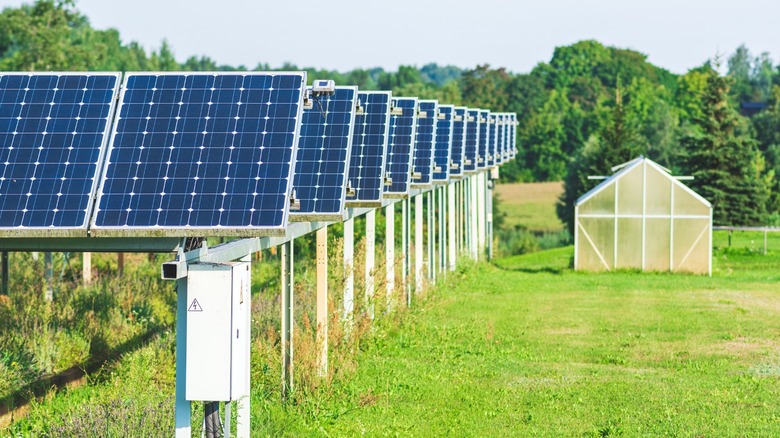
Michele Ursi/Shutterstock
A greenhouse is a great way to raise your own plants and produce. They work, in part, by using the sun’s rays and the natural greenhouse effect to create a warm, humid environment in which many plants can thrive, even when the weather outside is too hot or cold. While the most basic greenhouses may just be four glass or heavy-duty plastic walls and a roof, others utilize various pieces of machinery and technology to optimize growing conditions.
Some of the equipment that you can frequently find in a greenhouse include things like fans, automatic waterers, LED lights, and temperature or humidity sensors. However, while the greenhouse itself uses natural energy to create ideal growing conditions, all of that equipment is probably connected to a standard power grid, meaning fossil fuels are likely involved.
For environmentally-conscious growers, relying on fossil fuels can be an issue. The good news is that increasingly more people are installing solar panels, which help the environment while providing an eco-conscious way to power your greenhouse. However, there’s a lot to know before adding solar panels to your greenhouse. You’ll likely need extra equipment, including an inverter to convert the DC energy to AC and maybe a backup battery, too. That said, if you’re willing to invest the cash up front, how long it takes for solar panels to pay themselves off may surprise you.
If you decide to take the plunge, here are some ways to maximize the benefits you get from your solar panels.
Lighting systems
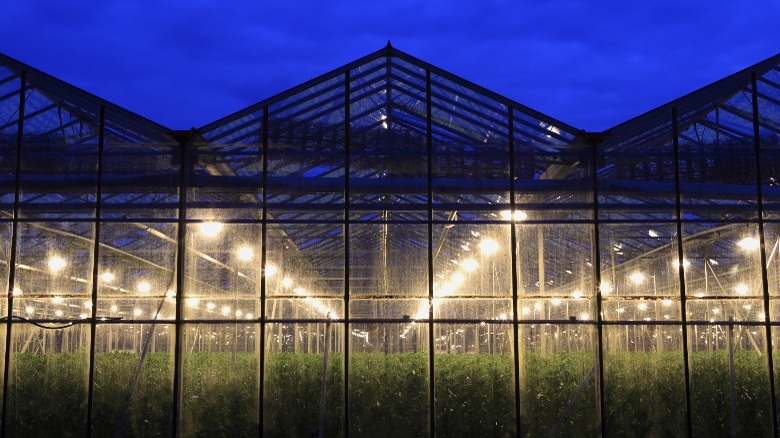
Gaps/Getty
It may seem obvious, but light is critical for plants to grow. Most of us remember high school biology, when we learned about photosynthesis, the process plants use to transform the sun’s rays into food. However, many people may not be aware that different plants require different amounts of sun each day. In a natural environment, plants grow in areas suited to their needs. But in a greenhouse, it’s common to have a mix of plants, often from diverse ecosystems and with varying sun and water requirements. Because of this, many growers opt to build lighting systems in their greenhouses. These systems supplement the sun’s rays and control the light that individual plants receive, and they’re especially useful in winter months when there’s far less natural sunlight.
Lighting systems connected to solar panels are a great way for greenhouses to cut down on energy expenses while growing tasty food.
Ventilation and exhaust systems
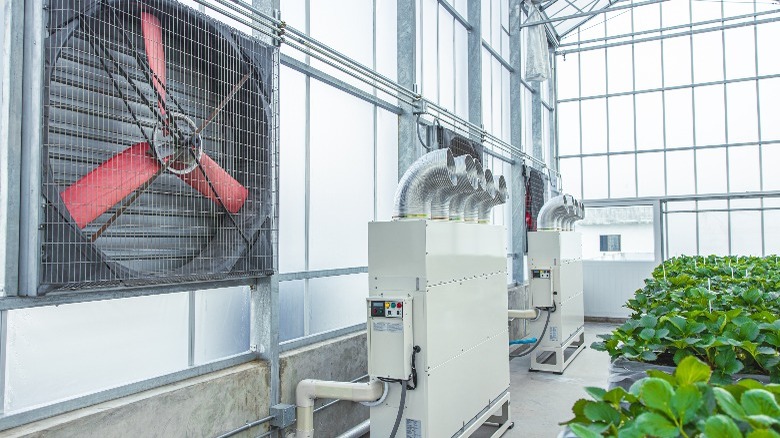
Quality Stock Arts/Shutterstock
Proper greenhouse ventilation is vital for the health of your plants. Airflow determines how much fresh air is inside, which is essential for photosynthesis. If the air in your greenhouse becomes stale or too hot, your plants may suffer illnesses or death. Airflow also helps with temperature regulation, pest control, and pollination.
Growers use fans and vents to keep fresh air flowing. Typically, these fans and vents are connected to a traditional power source, like your city’s electrical grid. However, there are many situations, depending on the time of the year and geographic location, where your greenhouse ventilation system needs to run continuously. That can use a lot of electricity, and the costs add up.
Instead, you can choose to connect your ventilation system to solar power. Doing so can decrease your monthly electric bill and have a positive impact on the environment. Many greenhouses are prebuilt with exhaust vents. Some experts already recommend installing solar openers on these vents, allowing them to open and close based on the current weather conditions.
Even a small solar array can provide enough power for a greenhouse ventilation system. Installing one could lead to significant savings in the long term while helping grow your produce in an eco-friendly way.
Automatic watering systems
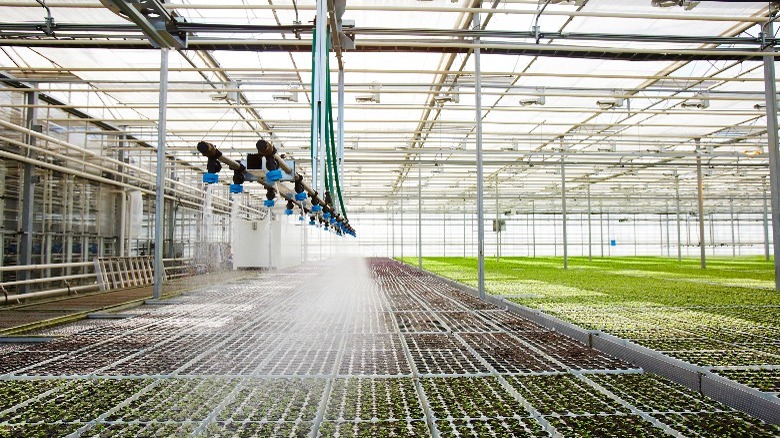
Shironosov/Getty
Another fact that may seem like a no-brainer is that plants need water. But, getting the proper amount of water to every plant inside a greenhouse is more challenging than many people may realize, particularly when it comes to maintaining a consistent and daily water supply. While a daily splash with the garden hose may be sufficient for very small-scale greenhouse operations, larger setups require more complex irrigation systems. To help keep their crops healthy, many growers utilize tools like water pumps, automatic timers, and a network of pipes and troughs to maintain a daily supply of water. The downside is that these systems can use a lot of electricity over time.
If you’re interested in cutting down on your energy costs, you could connect your greenhouse irrigation system to a solar array. Doing so may not be as complicated as you imagine, as several kits are available for relatively affordable prices. They’re relatively easy to install and set up and can help you lower your monthly energy costs. However, if you’d rather install a larger solar array, you can do that, too. Then, you’ll just have to connect your existing watering system to your solar setup.
Sensors
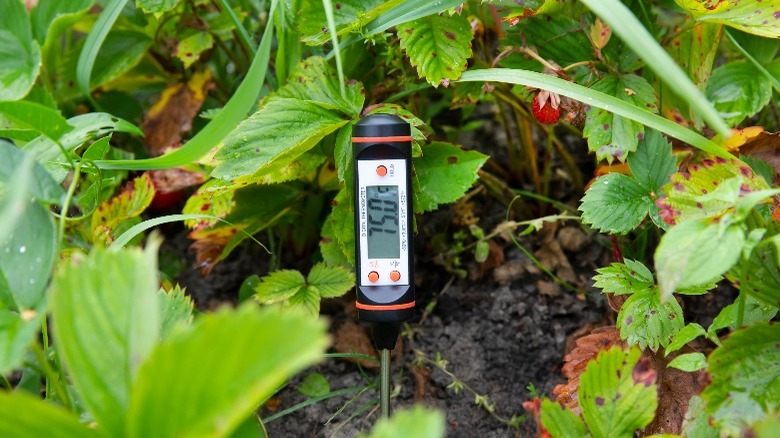
studiomiracle/Shutterstock
In their natural environments, plants grow without interference or outside assistance. However, in a greenhouse setting, growers must constantly monitor and adjust various conditions to keep plants healthy.
Most people aren’t able to spend 24 hours a day, seven days a week, monitoring the plants in their greenhouses. Instead, they rely on sensors to monitor conditions like ambient temperature, humidity, carbon dioxide, and soil moisture levels. Some of these sensors may even have secondary features, allowing them to control other parts of the greenhouse too, like exhaust vents or fans.
While the standard practice is to connect greenhouse sensors to the electrical grid or rely on battery-powered wireless devices, you don’t have to depend on fossil fuels or constantly change batteries. Instead, you can hook up your greenhouse sensors to a solar array. You can use a tiny solar panel to generate just enough energy for your sensors and the equipment they control, or you can choose to install a larger array and power your entire greenhouse operation.
Heating systems
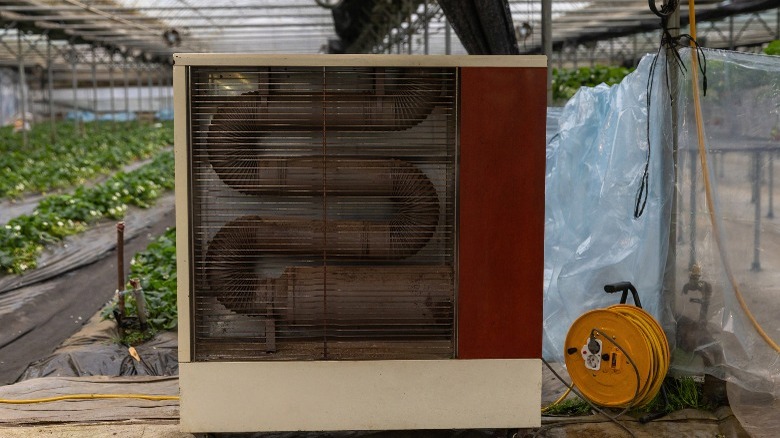
Kckate16/Getty
You may not think of heating systems as something necessary for a greenhouse. Greenhouses are supposed to be naturally hot and humid, right? The sun’s heat alone may not always be enough to keep your plants healthy, even if your greenhouse’s interior tends to be warm and muggy. It’s especially hard if you live somewhere with long, cold winters.
Many growers install secondary heating systems in their greenhouses to supplement the sun’s rays and keep plants warm. These systems may run on passive solar power, which is a greenhouse manufacturing approach that maximizes solar gains and minimizes heat loss. Other options include propane, natural gas, paraffin, and standard solar power.
While many experts recommend first using passive solar energy to heat greenhouses, you can combine passive and standard solar power for a truly eco-friendly setup. Doing so could allow you to sever your greenhouse from the electrical grid entirely. Considering that heating can be one of the most costly expenses your greenhouse faces, converting to a solar-powered heater can save you big bucks in the long term while also helping out the environment.